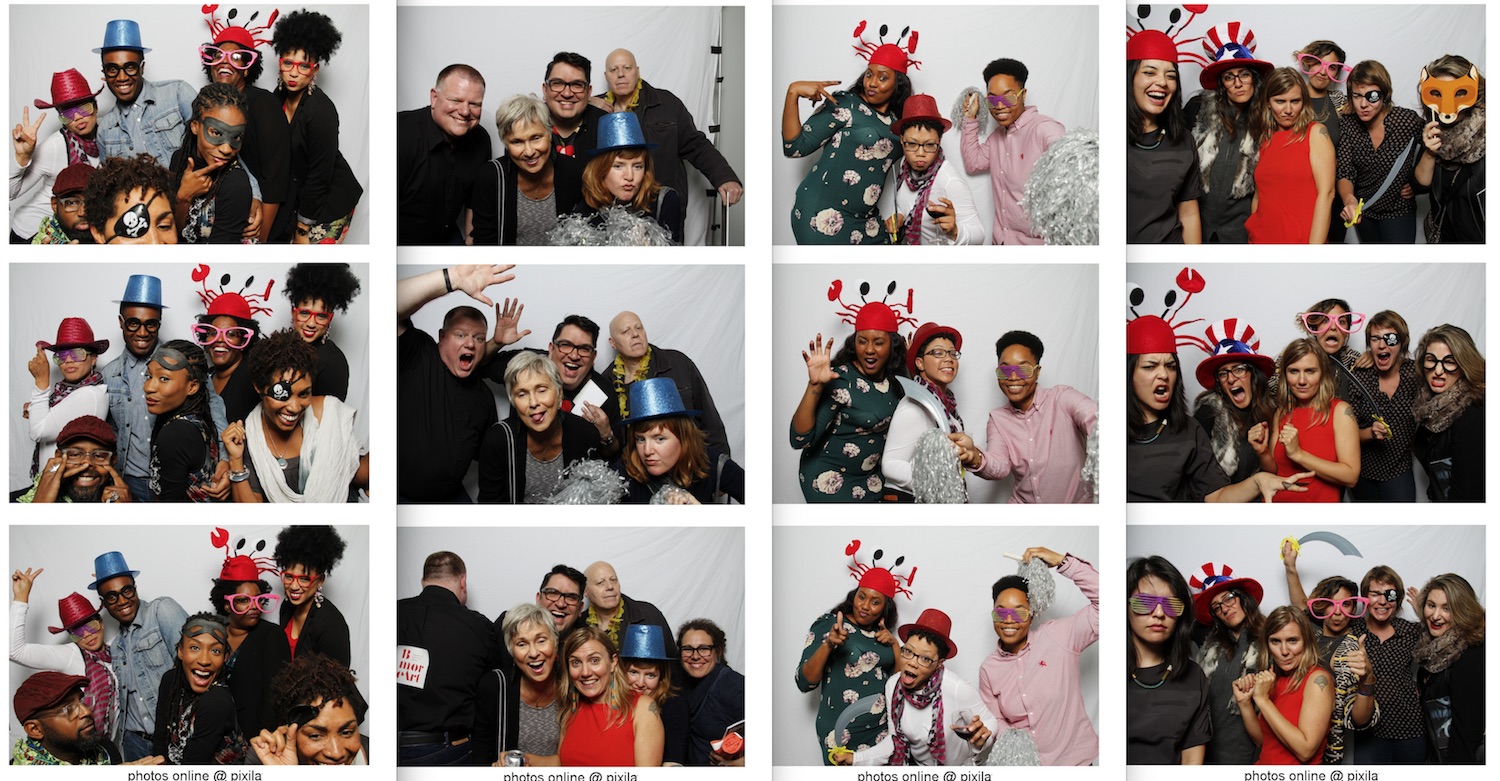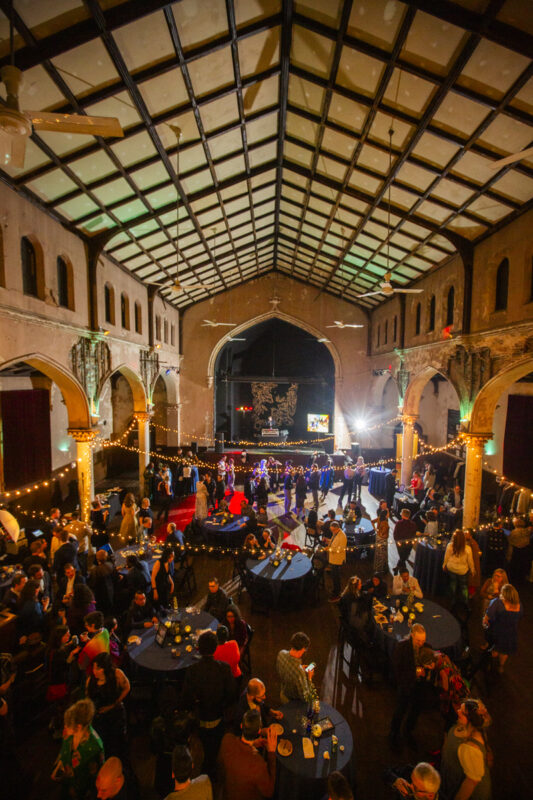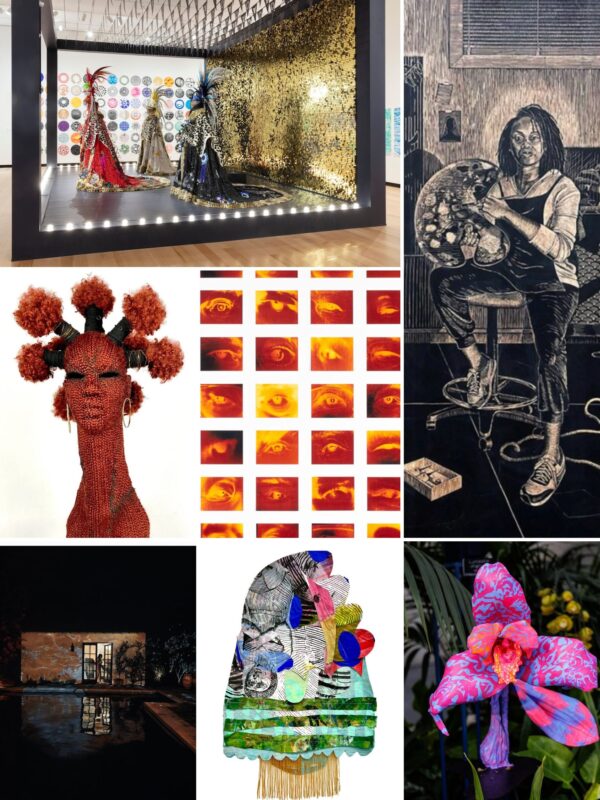A New Exhibition Alternative to Costly Fairs and Biennials Offers Peer-based Collaborative Approach to Exhibiting Abroad by Michael Anthony Farley
Condo is a word that used to strike fear in the hearts of gentrification-prone art enclaves.
Now it has a decidedly less sinister, more magnanimous connotation in the contentious arena of art and real estate. Condo is a new-ish international space-sharing program in which galleries in one city host exhibitions from out-of-town gallerists for one month. Founded by Vanessa Carlos in London in 2016, the model presents an alternative to costly art fairs and biennials—offering a peer-based, collaboratively-driven approach to exhibiting abroad. It’s one of those “why didn’t I think of that?” ideas that restores faith in the art world and its ability to innovate cooperative survival strategies. Past iterations have seen brick-and-mortar spaces in some of the priciest locales on the planet—namely, London and New York—host exhibitions from galleries based in cities including Berlin, Mexico City, Shanghai, and Guatemala City.
This month, Mexican galleries who have participated as guests in the program (LABOR and Agustina Ferreyra in New York last year and joségarcía ,mx in London this January) are returning the hospitality. They’re three of twenty-two art spaces across the Mexican capital hosting exhibitions from a whopping forty-nine foreign galleries from five continents. Organized by Ana Castella (of joségarcía ,mx) this iteration of Condo is the largest and most ambitious yet.
The only downside to this is the near-impossibility of seeing it all. The Condo shows have been on view since April 14th and I still haven’t had a chance to check out every gallery (thankfully, the exhibitions are up until May 12th). There’s a near-unanimous hope that the next edition features more gallery hours on the opening weekend—this year was only 11-6 on Saturday and 11-3 on Sunday. That’s a total of seven hours for almost fifty shows in twenty-two locations. Even if you did nothing but look at art and neglected basic human functions like eating and peeing (which we tried to do!) that leaves viewers with less than 10 minutes for each exhibition, not accounting for the utterly unpredictable travel times that zig-zagging across this vast, crazy city entails. Or attending the site-specific performances in various neighborhoods that no one I know got a chance to experience.
For out-of-towners visiting for a long weekend, it was disappointingly impossible to see even half of Condo, a frustration compounded by the fact that so many galleries are closed on Mondays. My gallery-hopping companions and I thought a good solution to this problem next time around might be a full four days from Thursday-Sunday evening. Or rolling, neighborhood-specific opening nights spread across a long weekend. A collective undertaking this cool and massive deserves to be seen in its entirety for viewers to fully appreciate its scale.
Below, some highlights of what I’ve had a chance to see so far:
 David Armacost at Springsteen
David Armacost at Springsteen
I was most excited to see Baltimore’s Springsteen take over Galería Breve in Colonia Juárez with a small, tight group show “Pain is the Minimum” featuring Alex Ito, Sydney Shen, David Armacost, and Flannery Silva.
 Sydney Shen, “Thirst is the Mother of Corvid Ingenuity (Perry Index of Aesopica #390),” Punitive boot, rocks engraved with names of rocks on Mars, erector set, clock movements, ribbon, water, bucket, 2016
Sydney Shen, “Thirst is the Mother of Corvid Ingenuity (Perry Index of Aesopica #390),” Punitive boot, rocks engraved with names of rocks on Mars, erector set, clock movements, ribbon, water, bucket, 2016
This sculpture from Sydney Shen, whose recent solo exhibition in Springsteen’s Baltimore home base had a similar spooky/sexy vibe, is one of Condo’s showstoppers. Shen’s work speaks to ergonomics gone awry—tweaking design objects meant to relate to the body into prostheses that could imply narratives ranging from S&M to discomfort, violence, or medical procedures that are anything but sterile. I love that this piece looks like some sort of kinky torture contraption, but has details that allude to space exploration… like an illustration to someone’s erotic fan fic about a penal colony running out of water based on “The Martian.”
 Sydney Shen. I was told this tiny assemblage of miniature dogs was based on “The Human Centipede” and literally LOLed in the gallery.
Sydney Shen. I was told this tiny assemblage of miniature dogs was based on “The Human Centipede” and literally LOLed in the gallery.
 Flannery Silva’s “Poser Doll Boxes”, 2018 at Springsteen/Breve
Flannery Silva’s “Poser Doll Boxes”, 2018 at Springsteen/Breve
In the same building (an insanely gorgeous art nouveau mansion) local curatorial powerhouse MARSO is hosting the gallery Sultana and the nomadic project space Sans Titre (2016), both based in Paris. They’re collaboratively presenting the two person show The Clean Carcass of the Host, featuring representational ceramics and paintings from Paloma Proudfoot and George Rouy, respectively.
Proudfoot’s work ranges from the pseudo-phallic (think bananas with ultramarine glaze and glistening eel/serpents slithering on the floor) to references to tools. Rouy’s figurative paintings are soft and lovely—and one canvas, in which a portrait floats disembodied above a coiled serpent, ties the two bodies of work together nicely. The show was such a crowd-pleaser I couldn’t get good photos through the viewers, so I swiped the one below from Sans Titre’s website.

A few blocks away, Machete Galería is hosting another ceramic/painting two-person show from the Santo Domingo gallery Sindicato with the artists Natalia Ortega and Hulda Guzmán. We Do it Together is probably—for lack of a better word—the cutest show I’ve seen in awhile.
The Dominican artists are best friends, and their distinct bodies of work share a playful approach to tropical modernism. The exhibition is a tribute to their friendship and the influence each has upon the others’ studio practice. Ortega makes cameos in Guzmán’s paintings, and forms that could be dildos, fruit, musical instruments, or body parts pop up in both artists’ work like inside jokes the viewer is being let halfway in on.
 Natalia Ortega (ceramics) and Hulda Guzmán (paintings)
Natalia Ortega (ceramics) and Hulda Guzmán (paintings)

 Hulda Guzmán at Sindicato/Machete
Hulda Guzmán at Sindicato/Machete
Around the corner, Parque Galería is hosting shows from New York’s Regina Rex and Good Weather—a project space that started in a garage in suburban North Little Rock, Arkansas—in their extremely awesome roof terrace galleries.

Hugo Montoya’s sculptures comprise found objects that have a formal, often comical relationship. A piece of bent metal, chunk of concrete, or oddly-shaped piece of wood might be joined into a composition that evokes a plinth or crutch. There’s very little “authorship” of the objects per se, Montoya moreso creates moments that speak to “display” or “support” for the not-quite-raw materials he encounters.

Regina Rex’s group show Tin Foil Top Hat features this ring-toss game in the shape of the former World Trade Center by Leah Dixon. It’s surprisingly fun, in a morbid sort of way. Most of the work in the show alludes to the idea of a monument in one way or another, such as Corey Escoto’s ideas for memorials spelled out in handmade translucent letters on fluorescent light tubes.

Alejandro Almanza Pereda’s sculptures (above), also at Regina Rex, might be my personal pick for the strongest series I’ve seen so far at Condo. Pereda has been recreating the clothes of the architects who designed buildings he’s lived in. These concrete reliefs are so nice to look at. They’re graphic but weighty, and their stylization reminds me of so much of the Socialist Realism that adorns Mexico’s post-revolutionary architecture from the heyday of Integración Plástica—a movement of functionalist architecture integrating fine art that positioned intellectual pursuits such as design or sculpture as activities in support of the proletariat and collectivism.
I overheard someone remarking that both Montoya’s work and so much of Tin Foil Top Hat speaks to “the possibility of architecture’s failure” and that the topic feels especially loaded in the context of Mexico City, after last year’s deadly earthquake and the collapse of dozens of rebar-and-concrete buildings. I might not have made that connection on my own, but it’s one I think is valid. On some level, both shows speak to the role of the artist in creating (or questioning) cultural memory out of the patrimony and/or detritus we inherit.
If Parque Galería’s opening receptions felt a bit like a rooftop party for the end of the world, Galería Karen Huber was the underground rave afterparty of the apocalypse. Visiting gallery Park View/Paul Soto (based in Los Angeles and Brussels) is presenting Dylan Mira’s “Duty Free,” a three-channel video installation with fog machines that totally transformed the space. In one projection, yellow flare smoke floods a field.
In another, 3D renders of anime “sexy schoolgirls” overlap and dance into one another’s hollow bodies, superimposed over a documentary about a tween in Lebanon who cries crystals. The piece is just enough of an information overload to make drawing connections amongst the content difficult, but feels deliberate and edited enough to make that content seem important. Is anything important? I found myself wondering in the best way possible in this impossibly dark space on an otherwise sunny afternoon.

On the other end of the video spectrum, ltd los angeles is showing artist/filmmaker Johan Grimonprez’s Blue Orchids for their takeover of Arróniz Arte Contemporáneo. I walked in to the gallery in the midst of a projected interview with Riccardo Privitera, an incarcerated arms dealer, while he graphically described witnessing rape and murder as a soldier in South Africa.
As the film progresses, others question whether Privitera was ever actually a South African soldier and whether that’s even his real name. We get the impression that Privitera is a sociopath and pathological liar—an impression certainly shared by one of his ex wives, who appears in the film. It’s an extremely difficult piece to watch, but thoroughly worthwhile. It’s a bit of a shock to a viewer’s headspace in the midst of gallery-hopping, but that’s not necessarily a bad thing.

The gallery is also showing/selling framed mixed-media pieces from Johan Grimonprez. The drawings are done on pages torn from the artist’s publications and present an almost tender counterpoint to the somewhat clinical sleekness and bleakness of the video.
 Installation view of The Mistake Room’s group show NO LONGER YOURS at Anonymous Gallery. (L-R) Cosmo Whyte, Eddie Aparicio, Ofelia Marquez.
Installation view of The Mistake Room’s group show NO LONGER YOURS at Anonymous Gallery. (L-R) Cosmo Whyte, Eddie Aparicio, Ofelia Marquez.
It’s a bit of a hike to Anonymous Gallery, (hosting The Mistake Room from Los Angeles) from any of the other clusters of exhibitions, so if you have to triage your Condo time, I hesitantly say this could be one show to skip. That being said, it’s a really cool space and there’s a lot of work here that’s best viewed in person (I’m thinking especially of Ofelia Marquez’s carved wooden box with flip-card animations that’s like a proto-television from an imaginary steampunk pre-Columbian civilization).
But the show’s also very uneven and doesn’t quite live up to its intriguingly serpentine curatorial concept—that there’s a renewed interest in figurative works authored by artists from marginalized backgrounds, but that “this reverberating call for visibility is highly suspect.” This diverse group of artists are grouped together because “they resist, evade, and even undermine the image of the legible body.” I suppose it’s hard to curate a negation, but the end product is a collection of pieces that range from non-representational mixed-media abstractions to stylized figuration. It doesn’t quite click as a group show.

If you’re in the area to check out museums though, it’s totally worth a detour to Anonymous if for no other reason than Susu Attar’s paintings. They’re based on family photos from the artist’s native Iraq and adopted hometown Los Angeles. The images have varying levels of detail and erasure—specifics such as location are often deliberately lost in translation to expressive brushstrokes. They speak to memory and its loss, and remind me a bit of a more intimate Meleko Mokgosi (who paints his native Botswana from his studio in New York in massive, collage-like works based on photos and is having a show currently at the Baltimore Museum of Art). Perhaps this act of translation—balancing a distant nostalgia with painterly deletion of context—is an emerging language of diaspora?
The Condo exhibitions are on view until Saturday, and I’m looking forward to checking out the rest. If what I’ve seen so far is any indication, this is a pretty great selection of galleries. I’m also looking forward to Condo’s growth and continuation (a mini-version is running concurrently in Sao Paulo and the Shanghai edition is in the works). I can’t stress enough how much nicer of an art viewing experience this model offers than a soul-less convention center art fair or unbearably pretentious biennial. Someone ought get the ball rolling on a Baltimore version…







